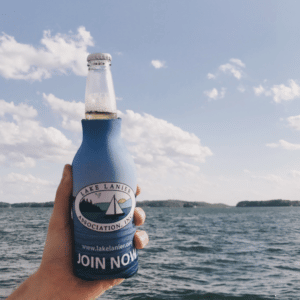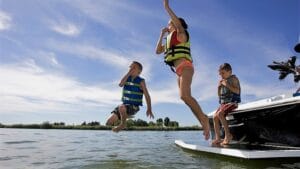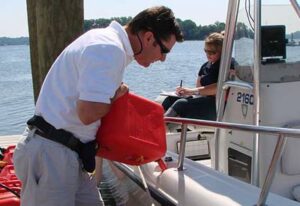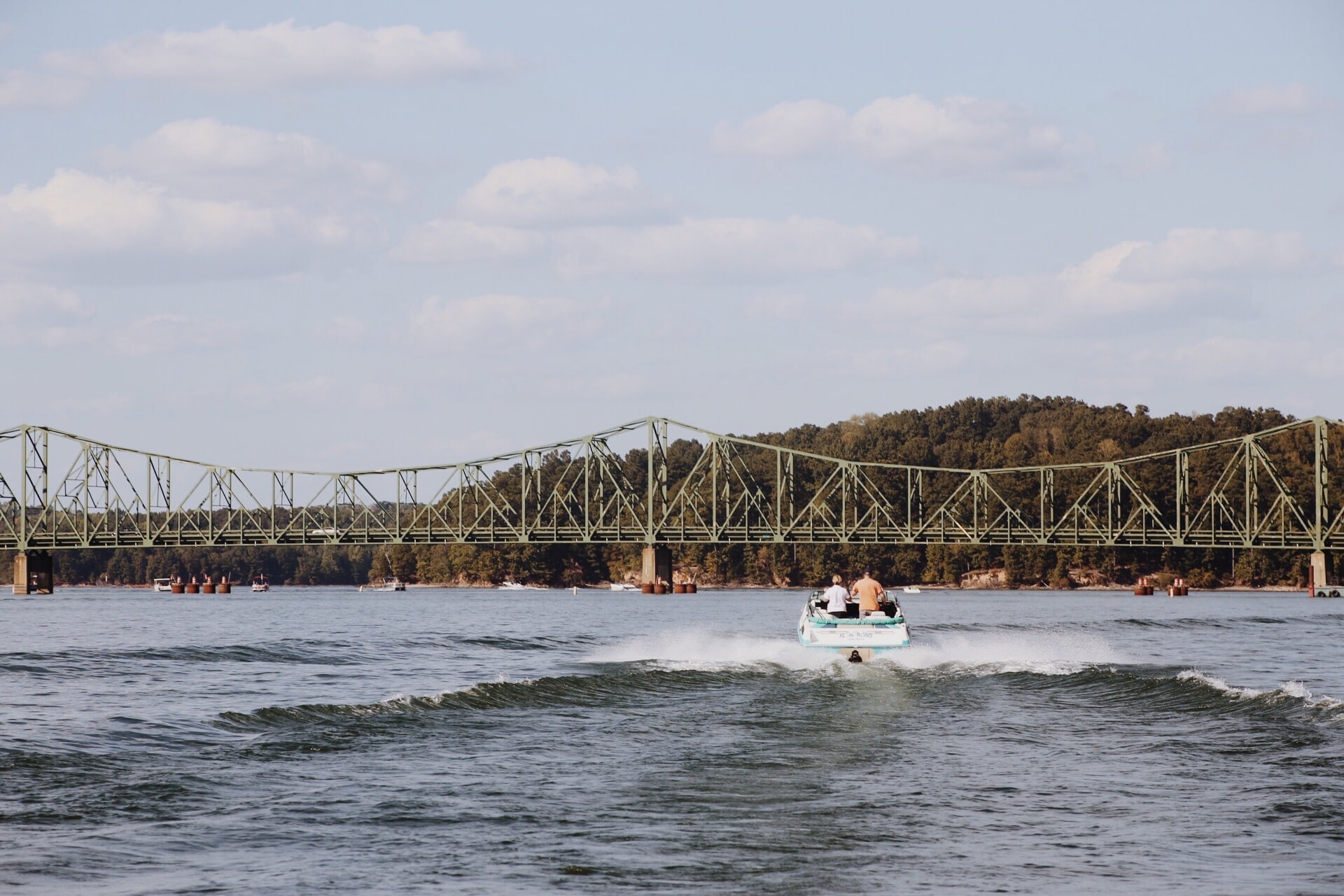Know the Ropes: Boating Safety & Hospitality
This “Know the Ropes” Article is from the Kick-Off to Summer 2022 Newsletter
BY AMY MCGUIRE, EXECUTIVE DIRECTOR
Ahoy! As the temperatures rise and the sun shines on Lanier, we thought it was a great time to discuss “the rules of boating”. Rules, as you know, are set in place to protect everyone. Sometimes the rules are set forth by a governing agency, city, state, etc.— or, they may be your personal rules. However, one of the hardest parts of enforcing rules on your dock or vessel, is conveying them without making your guests uncomfortable.
In this installment of “Know the Ropes” we offer some tips to help enforce meaningful safety measures. These are common boating safety topics, but sometimes awkward to enforce.
You can’t exactly hand someone a sweet tea, or a cold beer, and say, “Before we have any fun, let me remind you of the rules”. That doesn’t exactly set the tone for a fun and relaxing day on the water. However, you can still get your point across with a dash of humor or in more subtle ways where they are not expressed verbally but clearly implied.
The first step in conveying the rules is knowing them yourself. Clear expectations and communication is vital for the captain, co-captain and deckhands—these are the ones who are going to be primary users of the boat and/or dock. These folks are the ones who must know the ropes and set the example for everyone else. This can include the youngest members of the family as well! It’s never too early to be a leader!
Let’s dive in! See what I did there? I made a pun. Puns are great and when used properly, a great way to convey an important message with a dash of humor. Remember, people will remember a corny joke over a somber rule. Below are some simple tried and true rules along with a humorous way to convey them. Enjoy!

Rule #1: Drinking and Boating
We are not opposed to enjoying a cold beverage of the adult variety on a hot summer day – especially if it helps you wash (most) of your cares away. This is where a subtle, non-verbal rule can be applied.
The Rule: Never stock your boat, or cooler, with enough alcohol to inebriate every adult on the boat.
It’s in poor taste for a person to consume all the alcohol, especially when supply is limited. If one adult hogs all the alcohol (that’s what we call greed if you don’t happen to be from around here), they open themselves for criticism, ribbing or casual intervention.
Rule #2: Swim with a Float 
The Rule: No one swims without floatation. Ever.
If you’re swimming lakeside, simply ask, “Who, in their right mind, enjoys treading water?” then casually offer floatation of some sort. If you need further reinforcement to state the obvious, you have another option. Try saying, “Here. Use this so you don’t get water in your [insert adult beverage here]”. For kids, a cool life vest will always command attention. Involve your child in the shopping process!
Pro Tip for Your Newest Boaters: Allow your infants and toddlers to wear their life vest in the house or while playing or even napping. This ensures they get used to wearing it and don’t associate it with boating or being on the dock it just becomes a way of life. * This is crucial because the smallest among us can have the biggest impact on the water. Those cries of disdain are LOUD. We advise starting them young! *
 Rule #3: Please Remain Seated During Docking Procedures
Rule #3: Please Remain Seated During Docking Procedures
As the captain of our vessel, we have our routines. And let’s face it— docking is a source of pride. Nothing sparks confidence like docking your boat without incident. How do you avoid incident (and maybe show off your mad skills) when you have a boat full of guests? Easy. Take command of your vessel, Captain!
The Rule: Leave docking to the captain, first mate and/or the deckhands.
When approaching the dock, take advantage of the No Wake Zone. While you’ve slowed to a nice cruising speed, you can converse without the roar of the engine creating opportunities for misinterpretation. Simply state ‘the plan’ and add something light like “Please remain seated until the ride comes to a complete stop”, or, “This is your captain speaking. We hope you’ve enjoyed your cruise aboard the [insert cool boat name here]. We ask that you remain seated to allow the captain and deckhands to show off their mad docking skills”. IF you use that last one, be sure your docking skills are, in fact, MAD!
This will avoid injuries that could happen around the dock. When everyone knows their role, disembarking will go a lot smoother. Guaranteed. Clearly stating the plan also ensures you can hurry up and get your name on the list at any one of Lanier’s great restaurants!
Finally, Rule #4. In the day of rising gas prices, we believe you’ll thank us for this one. We invite you to save this article and stow in your glove box for future reference. Here it is:
Rule #4: Who Pays for Gas? 
While this one isn’t necessarily a safety issue, this is the South where etiquette reigns supreme!
The Rule: If you’re a regular on the vessel, pony up! The best way to establish “fuel assistance” is to determine who is a “regular” and who is a “guest”.
If you’ve invited someone on your boat (especially your boss, customer, or other VIP), fuel up before they arrive! On the other hand, if you’ve got that best friend from high school, college, military, work, etc. who’s on your boat so much it wouldn’t seem right without them, it’s not in poor taste to ask them to chip in for gas. We suggest never asking for a dollar amount though; allow any regulars to contribute as their budget allows.
This concludes this installment of “Know the Ropes”. Our intention was to insert some good-natured humor while reminding you the best memories are made when everyone remains safe around the water! Find more boating safety and etiquette tips on our Facebook and Instagram. Search for the “Lake Lanier Association” and follow along to never miss an LLA update.
The Lake Lanier Association encourages you to stay informed of changing rules and laws on the lake, and we do our best to convey those when they change. We also encourage taking a boating safety course. To go a step further, pair a safe boating course with a course in First Aid & CPR—a triple threat in the fight against accidents and fatalities on and around the water. Safety courses are widely available through the U.S. Coast Guard and America’s Boating Club. More information can be found on the LLA website at lakelanier.org/safety-courses.



